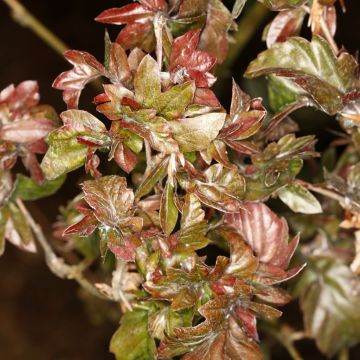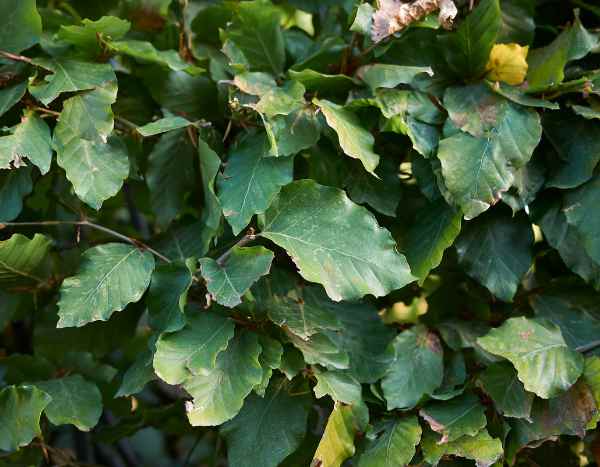

Fagus sylvatica Silbertaler
Fagus sylvatica Silbertaler
Fagus sylvatica 'Silbertaler'
Beech
Special offer!
Receive a €20 voucher for any order over €90 (excluding delivery costs, credit notes, and plastic-free options)!
1- Add your favorite plants to your cart.
2- Once you have reached €90, confirm your order (you can even choose the delivery date!).
3- As soon as your order is shipped, you will receive an email containing your voucher code, valid for 3 months (90 days).
Your voucher is unique and can only be used once, for any order with a minimum value of €20, excluding delivery costs.
Can be combined with other current offers, non-divisible and non-refundable.
Why not try an alternative variety in stock?
View all →This plant carries a 24 months recovery warranty
More information
We guarantee the quality of our plants for a full growing cycle, and will replace at our expense any plant that fails to recover under normal climatic and planting conditions.
Would this plant suit my garden?
Set up your Plantfit profile →
Description
Fagus sylvatica 'Silbertaler' is a variegated beech with a modest size and slow growth, rarely available for sale. Its elegant foliage is composed of leaves irregularly bordered with cream-white to very pale yellow, which can withstand the sun, unlike many other variegated varieties. Its autumn colours and smooth grey bark are also attractive. A small tree for collectors, easy to grow in cool or cold climates, and a beautiful addition to any garden.
Fagus sylvatica, commonly known as beech, is a deciduous tree species native to Europe and belongs to the Fagaceae family, along with oak and chestnut trees. It is one of the main forest species in temperate Europe. It can be found in pure beech forests and mixed with other species in leafy forests, primarily with European oak or in mixed forests with silver fir or Norway spruce. It is an indicator of a humid temperate climate. Foresters use it for high-quality timber production, furniture, and, in mountainous areas, as firewood. In spring, from April to May, it has relatively insignificant flowers. The pale yellow male flowers of the common beech are gathered in pendulous catkins measuring 40 to 60 mm, while the green female flowers are grouped in 2 to 4 at the ends of the branches. In autumn, the beech nuts, the fruits of the beech tree, start to appear in the form of woody husks covered in bristly spikes.
Fagus sylvatica 'Silbertaler' was discovered by G. Escherich in 1993. This variety forms a small tree with a straight trunk and a conical to oval crown when young, spreading slightly as it ages. It has a slow growth rate, reaching approximately 4 m in height and 3 m in width at 20 years old. The branches are smooth and greyish. The leaves are alternate, petiolate, broadly ovate, medium-sized for a beech tree, and wavy on the leaf edge. Many leaves are variegated, but some may be completely green. The variegated leaves have more or less cream-white margins, sometimes yellow cream. In autumn, the foliage turns yellowish-brown and remains on the tree during winter, only falling when new leaves appear.
This variegated beech is highly resistant to cold, down to at least -25°C. Its foliage adds a touch of elegance and light to the landscape. It can be planted as a specimen tree in a small garden or in an informal hedge. It will create a multicoloured and ever-changing scene when paired with beautiful shrubs such as the White Horse Chestnut, which produces plume-like white panicles in late summer, Crotonifolia Aucuba with its beautifully variegated foliage even in winter, or the Superba Barberry with its deciduous purple-violet foliage, for example.
Plant habit
Flowering
Foliage
Botanical data
Fagus
sylvatica
'Silbertaler'
Fagaceae
Beech
Cultivar or hybrid
Other Fagus - Beech
View all →Planting and care
Plant your Fagus sylvatica Silbertaler in autumn or early spring, choose a sunny and open location, and keep in mind the space it will take up in the long term. If your soil is poor, a generous addition of leaf compost will be essential. It tolerates limestone well. Water regularly during the summer following planting and make sure to protect it from summer droughts. Mulching can help keep the soil moist at the base and reduce the need for watering. In February-March, when the tree is dormant, prune for balance, if necessary, every 3 years or so, by thinning out the centre of the canopy. Beware of aphids, scale insects, and mildew.
Planting period
Intended location
Care
Planting & care advice
This item has not been reviewed yet - be the first to leave a review about it.
Similar products
Haven't found what you were looking for?
Hardiness is the lowest winter temperature a plant can endure without suffering serious damage or even dying. However, hardiness is affected by location (a sheltered area, such as a patio), protection (winter cover) and soil type (hardiness is improved by well-drained soil).

Photo Sharing Terms & Conditions
In order to encourage gardeners to interact and share their experiences, Promesse de fleurs offers various media enabling content to be uploaded onto its Site - in particular via the ‘Photo sharing’ module.
The User agrees to refrain from:
- Posting any content that is illegal, prejudicial, insulting, racist, inciteful to hatred, revisionist, contrary to public decency, that infringes on privacy or on the privacy rights of third parties, in particular the publicity rights of persons and goods, intellectual property rights, or the right to privacy.
- Submitting content on behalf of a third party;
- Impersonate the identity of a third party and/or publish any personal information about a third party;
In general, the User undertakes to refrain from any unethical behaviour.
All Content (in particular text, comments, files, images, photos, videos, creative works, etc.), which may be subject to property or intellectual property rights, image or other private rights, shall remain the property of the User, subject to the limited rights granted by the terms of the licence granted by Promesse de fleurs as stated below. Users are at liberty to publish or not to publish such Content on the Site, notably via the ‘Photo Sharing’ facility, and accept that this Content shall be made public and freely accessible, notably on the Internet.
Users further acknowledge, undertake to have ,and guarantee that they hold all necessary rights and permissions to publish such material on the Site, in particular with regard to the legislation in force pertaining to any privacy, property, intellectual property, image, or contractual rights, or rights of any other nature. By publishing such Content on the Site, Users acknowledge accepting full liability as publishers of the Content within the meaning of the law, and grant Promesse de fleurs, free of charge, an inclusive, worldwide licence for the said Content for the entire duration of its publication, including all reproduction, representation, up/downloading, displaying, performing, transmission, and storage rights.
Users also grant permission for their name to be linked to the Content and accept that this link may not always be made available.
By engaging in posting material, Users consent to their Content becoming automatically accessible on the Internet, in particular on other sites and/or blogs and/or web pages of the Promesse de fleurs site, including in particular social pages and the Promesse de fleurs catalogue.
Users may secure the removal of entrusted content free of charge by issuing a simple request via our contact form.
The flowering period indicated on our website applies to countries and regions located in USDA zone 8 (France, the United Kingdom, Ireland, the Netherlands, etc.)
It will vary according to where you live:
- In zones 9 to 10 (Italy, Spain, Greece, etc.), flowering will occur about 2 to 4 weeks earlier.
- In zones 6 to 7 (Germany, Poland, Slovenia, and lower mountainous regions), flowering will be delayed by 2 to 3 weeks.
- In zone 5 (Central Europe, Scandinavia), blooming will be delayed by 3 to 5 weeks.
In temperate climates, pruning of spring-flowering shrubs (forsythia, spireas, etc.) should be done just after flowering.
Pruning of summer-flowering shrubs (Indian Lilac, Perovskia, etc.) can be done in winter or spring.
In cold regions as well as with frost-sensitive plants, avoid pruning too early when severe frosts may still occur.
The planting period indicated on our website applies to countries and regions located in USDA zone 8 (France, United Kingdom, Ireland, Netherlands).
It will vary according to where you live:
- In Mediterranean zones (Marseille, Madrid, Milan, etc.), autumn and winter are the best planting periods.
- In continental zones (Strasbourg, Munich, Vienna, etc.), delay planting by 2 to 3 weeks in spring and bring it forward by 2 to 4 weeks in autumn.
- In mountainous regions (the Alps, Pyrenees, Carpathians, etc.), it is best to plant in late spring (May-June) or late summer (August-September).
The harvesting period indicated on our website applies to countries and regions in USDA zone 8 (France, England, Ireland, the Netherlands).
In colder areas (Scandinavia, Poland, Austria...) fruit and vegetable harvests are likely to be delayed by 3-4 weeks.
In warmer areas (Italy, Spain, Greece, etc.), harvesting will probably take place earlier, depending on weather conditions.
The sowing periods indicated on our website apply to countries and regions within USDA Zone 8 (France, UK, Ireland, Netherlands).
In colder areas (Scandinavia, Poland, Austria...), delay any outdoor sowing by 3-4 weeks, or sow under glass.
In warmer climes (Italy, Spain, Greece, etc.), bring outdoor sowing forward by a few weeks.


































































